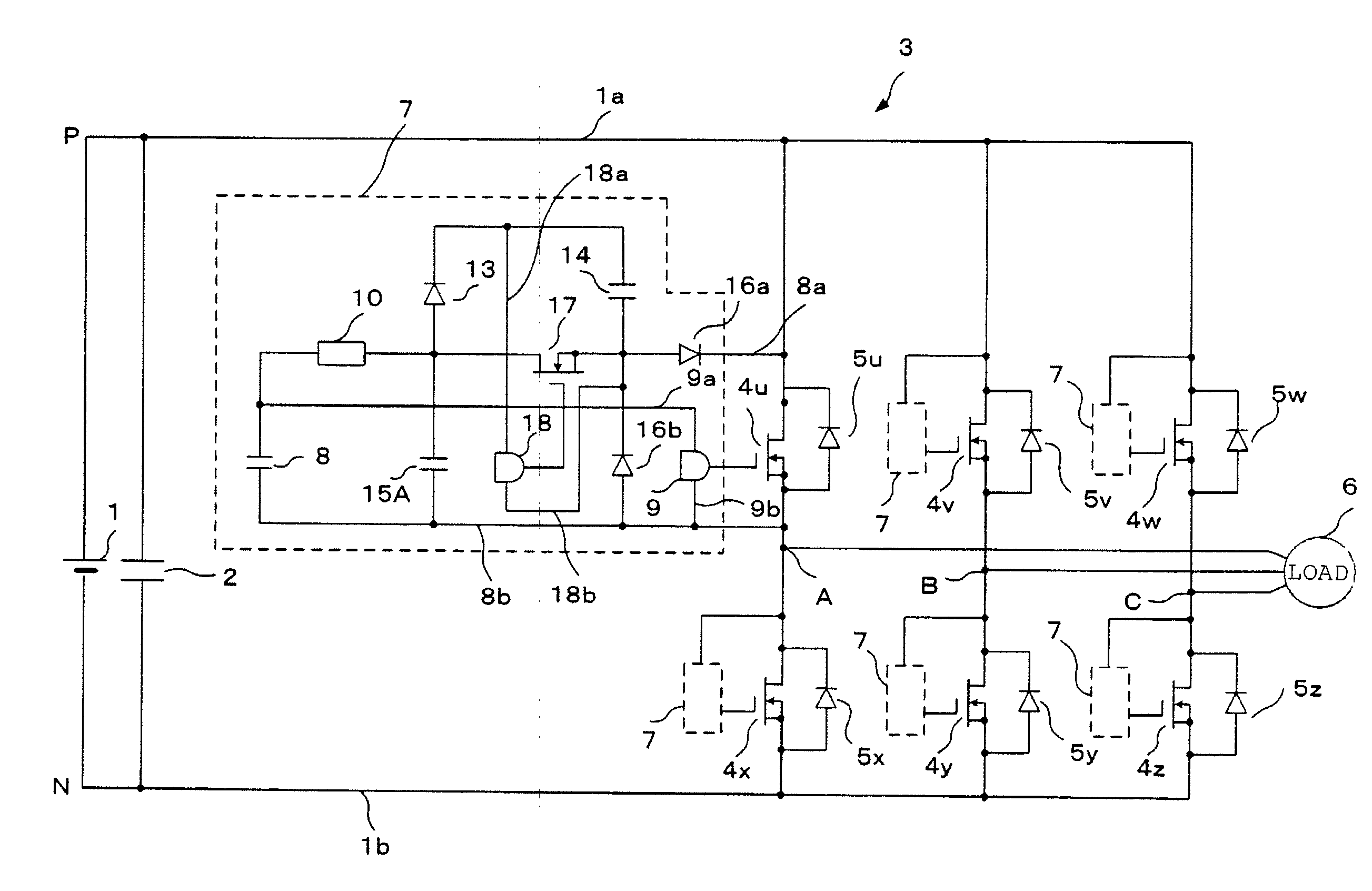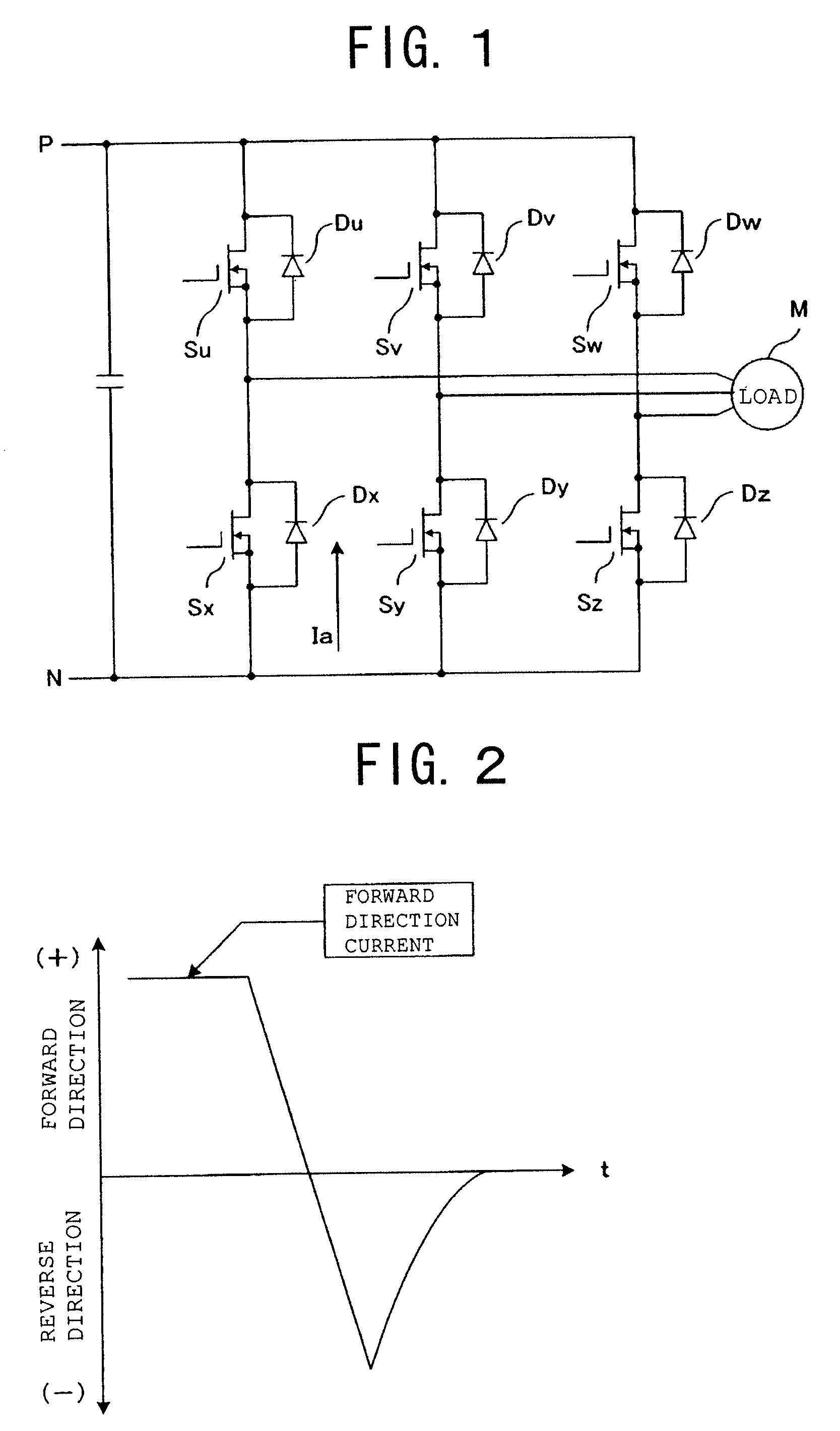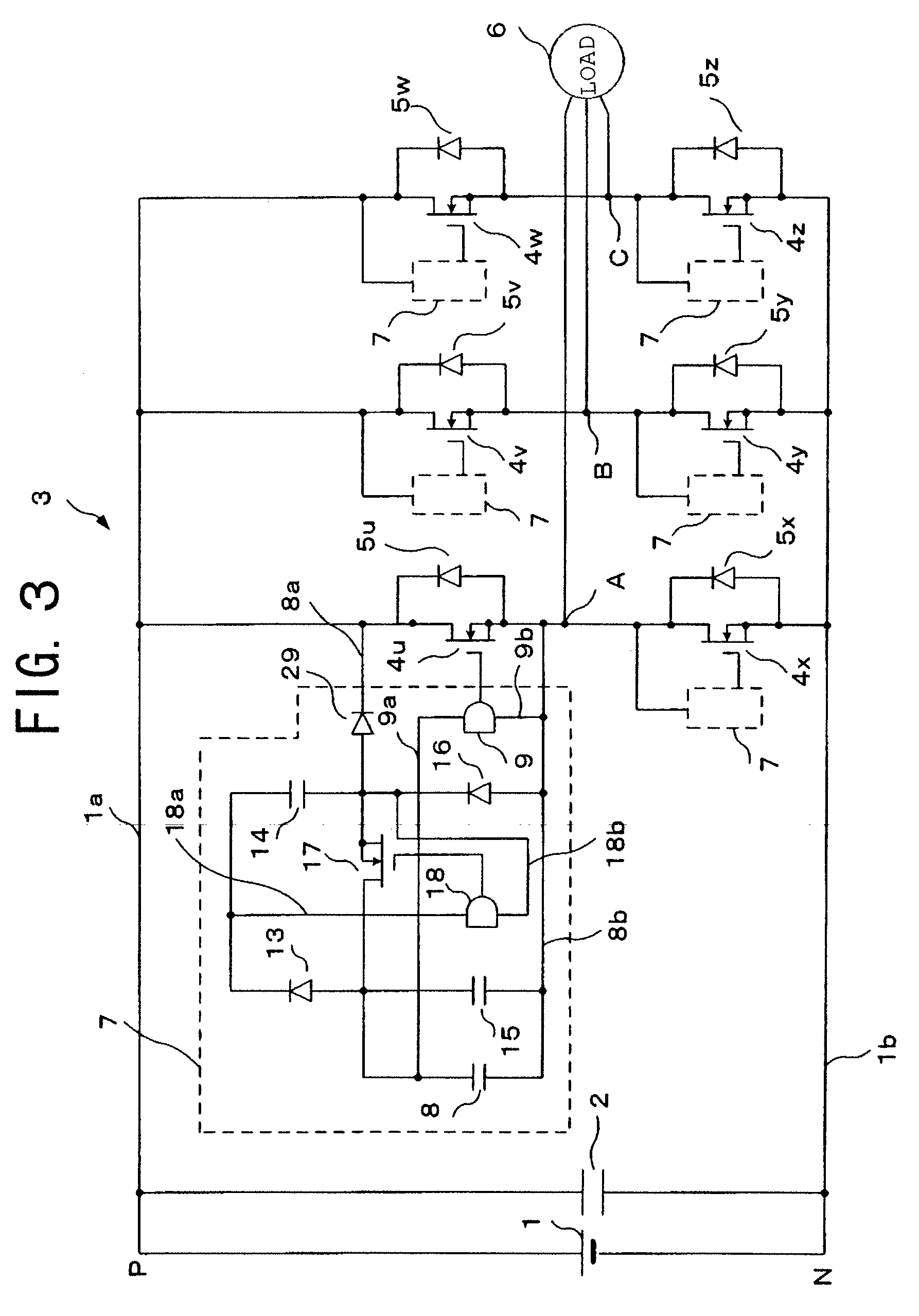Power Converter
- Summary
- Abstract
- Description
- Claims
- Application Information
AI Technical Summary
Benefits of technology
Problems solved by technology
Method used
Image
Examples
first embodiment
[0062]FIG. 4 is a circuit diagram of a power conversion device according to a first embodiment of the present invention. In this first embodiment, compared with the prior art example shown in FIG. 3, there is additionally provided a current suppression circuit 10 that suppresses the main circuit current flowing to the low-voltage DC voltage power source 8 during reverse recovery of the free-wheel diodes 5 (5u, 5v, 5w, 5x, 5y, 5z) in the reverse voltage application circuit 7 and a high frequency capacitor 15A that has low internal impedance even in the high frequency band is connected in parallel with the series circuit of the low-voltage DC voltage power source 8 and current suppression circuit 10. Elements which are the same as in the case of FIG. 3 are given the same reference symbols and repeated description is dispensed with.
[0063]In FIG. 4, the voltage at the point A of the main inverter circuit 3 is detected and, when it is found that a condition exists in which reverse recove...
second embodiment
[0074]FIG. 7 is a circuit diagram of major parts of a reverse voltage application circuit 7 in a power conversion device according to a second embodiment of the present invention. In this second embodiment, in comparison with the first embodiment shown in FIG. 4, the low-voltage DC voltage power source 8 is arranged to be employed as a drive power source of the main circuit switching elements 4.
[0075]In FIG. 7, the base drive circuit 9 of a main current switching element 4 comprises a gate drive amplifier 27 and gate resistance 19; the gate drive amplifier 27 obtains power from the low-voltage DC voltage power source 8 and inputs this to the gate terminal of the main circuit switching element 4 as a gate drive signal of the main circuit switching elements 4 through the gate resistance 19. FIG. 7 shows the case where a resistor is employed as the current suppression circuit 10.
[0076]Since, due to the current suppressing effect of the current suppression circuit 10 and the high freque...
third embodiment
[0077]FIG. 8 is a circuit diagram of major parts of a reverse voltage application circuit 7 in a power conversion device according to a third embodiment of the present invention. In comparison with the first embodiment shown in FIG. 4, in this third embodiment, of the sets of pairs of main circuit switching elements 4u to 4w, 4x to 4z, a reverse voltage application circuit 7 is provided only for the main circuit switching elements 4x to 4z on the side that is connected with the negative side of the DC power source. FIG. 8 shows the power conversion device in the case where this is used as a three-phase inverter.
[0078]In FIG. 8, the positive side DC bus 1a and negative side DC bus 1b extend from the DC voltage source 1, IGBTs (Insulated Gate Bipolar Transistor) are employed for the positive side main circuit switching elements 4u to 4w between the positive side DC bus 1a and negative side DC bus 1b, and MOSFETs are employed for the negative side main circuit switching elements 4x to ...
PUM
 Login to View More
Login to View More Abstract
Description
Claims
Application Information
 Login to View More
Login to View More - R&D
- Intellectual Property
- Life Sciences
- Materials
- Tech Scout
- Unparalleled Data Quality
- Higher Quality Content
- 60% Fewer Hallucinations
Browse by: Latest US Patents, China's latest patents, Technical Efficacy Thesaurus, Application Domain, Technology Topic, Popular Technical Reports.
© 2025 PatSnap. All rights reserved.Legal|Privacy policy|Modern Slavery Act Transparency Statement|Sitemap|About US| Contact US: help@patsnap.com



